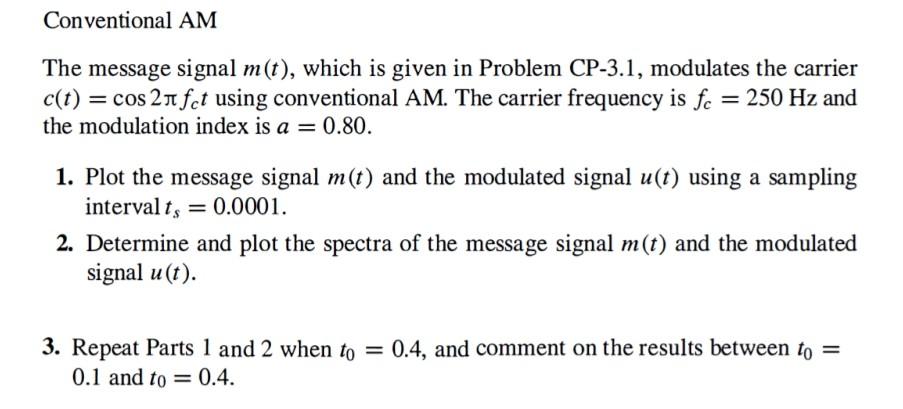Conventional AM The message signal m(t), which is given in Problem CP-3.1, modulates the carrier c(t) = cos2πfct using conventional AM. The carrier frequency is fc = 250 Hz and the modulation index is a = 0.80. Plot the message signal m(t) and the modulated signal u(t) using a sampling interval ts = 0.0001. Determine and plot the spectra of the message signal m(t) and the modulated signal u(t). Repeat Parts 1 and 2 when t0 = 0.4, and comment on the results between t0 = 0.1 and t0 = 0.4.
